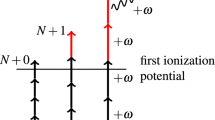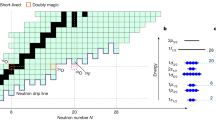Abstract
IN their recent paper,1 Lord Rutherford and Dr Ellis have shown how the numerous γ-rays of radium C′ can be arranged in a simple and orderly manner, which suggests, as they point out, that the multiplicity of the γ-rays is largely due to the excitation of several α-particles into the same excited level rather than to the excitation of one α-particle into several excited levels. Their arrangement of the lines of radium C′ is probably not a unique scheme of this sort, but any reasonable scheme appears likely (they show) to present the same general features.
This is a preview of subscription content, access via your institution
Access options
Subscribe to this journal
Receive 51 print issues and online access
$199.00 per year
only $3.90 per issue
Buy this article
- Purchase on Springer Link
- Instant access to full article PDF
Prices may be subject to local taxes which are calculated during checkout
Similar content being viewed by others
References
Proc. Roy. Soc., A, vol. 132, p. 667: 1931.
Author information
Authors and Affiliations
Rights and permissions
About this article
Cite this article
FOWLER, R. Quantum-Mechanical Models of a Nucleus. Nature 128, 453–454 (1931). https://doi.org/10.1038/128453a0
Issue Date:
DOI: https://doi.org/10.1038/128453a0
Comments
By submitting a comment you agree to abide by our Terms and Community Guidelines. If you find something abusive or that does not comply with our terms or guidelines please flag it as inappropriate.



